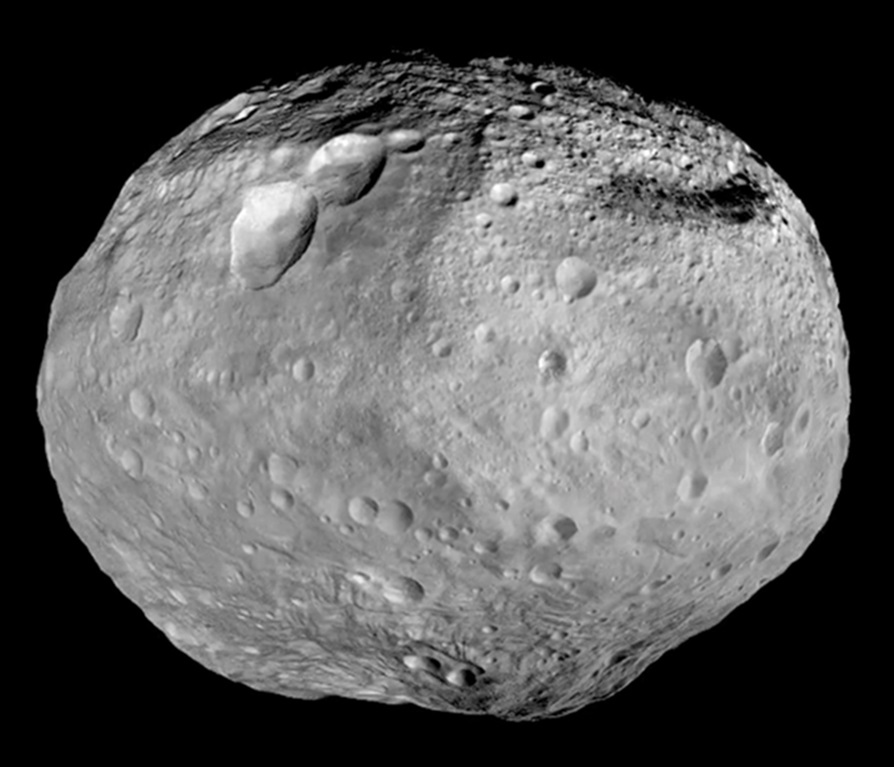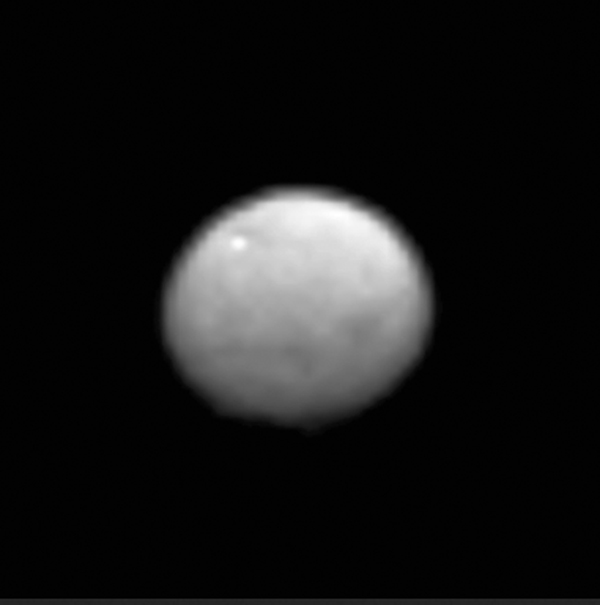…and not the ‘dawn’ we refer to when watching a sunrise. Dawn is a NASA spacecraft that was launched in 2007 with the goal of exploring the asteroid belt by observing its largest and most interesting objects up close. The two largest asteroids, Vesta and Ceres, have been the largest mission goals of Dawn as it has journeyed through the belt.

From July 2011 to September 2012, Dawn was in orbit around the 525 Km wide Vesta, snapping amazing photos and studying the giant in detail.

Since it’s departure from Vesta in September 2012, the craft has been on route to the Dwarf Planet Ceres (Which wasn’t even considered a dwarf planet until a year before Dawn launched). Ceres is by far the largest object in the asteroid belt, at a whopping 950 Km in diameter, about 1/4 of the diameter of Earth’s Moon.
The long journey for Dawn has been a relatively slow one. Using Ion propulsion, Dawn is able to move through the asteroid belt with incredible efficiency, but at the cost of any appreciable speed. Dawn is currently approaching Ceres at a distance of 380,000 Km (the distance from Earth to the Moon) and is expected to arrive in March of this year. For comparison, the New Horizons mission en route to Pluto is 150,000,000 Km from its target and will arrive in July 2015, meaning it is going much faster.
The latest images from Dawn show Ceres in its rotation, a bit fuzzy. The image quality will slowly improve as the craft prepares to insert itself into orbit around Ceres on March 6th, 2015. Still, the images are starting to come in and they are tantalizing astronomers with the promise of incredible high resolution shots in the coming months.


Exciting to think about the promise of missions like these puttering around the solar system for so many years, furthering our understanding of our origins. The mission goals of Dawn are to study the asteroid belt in hopes of understanding more about the origins of the solar system, and consequently, where we came from.
March will be a fun month in astronomy news!

3 thoughts on “Dawn is Approaching Ceres”